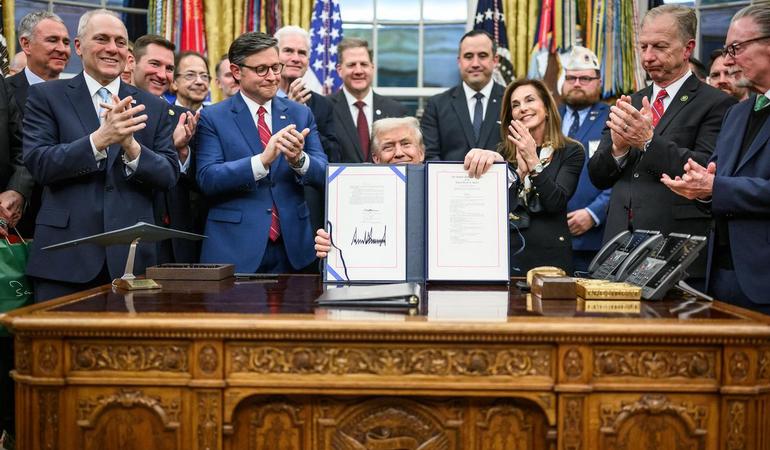
Scandalo Nba, la mafia affascina ancora gli Usa e Trump ne adotta lo stile
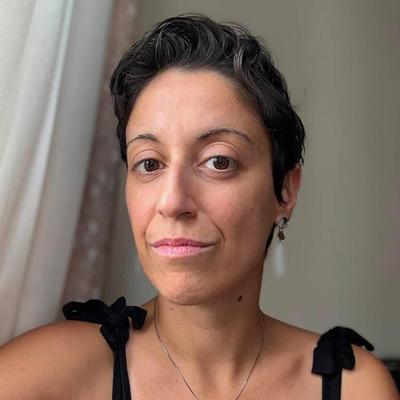
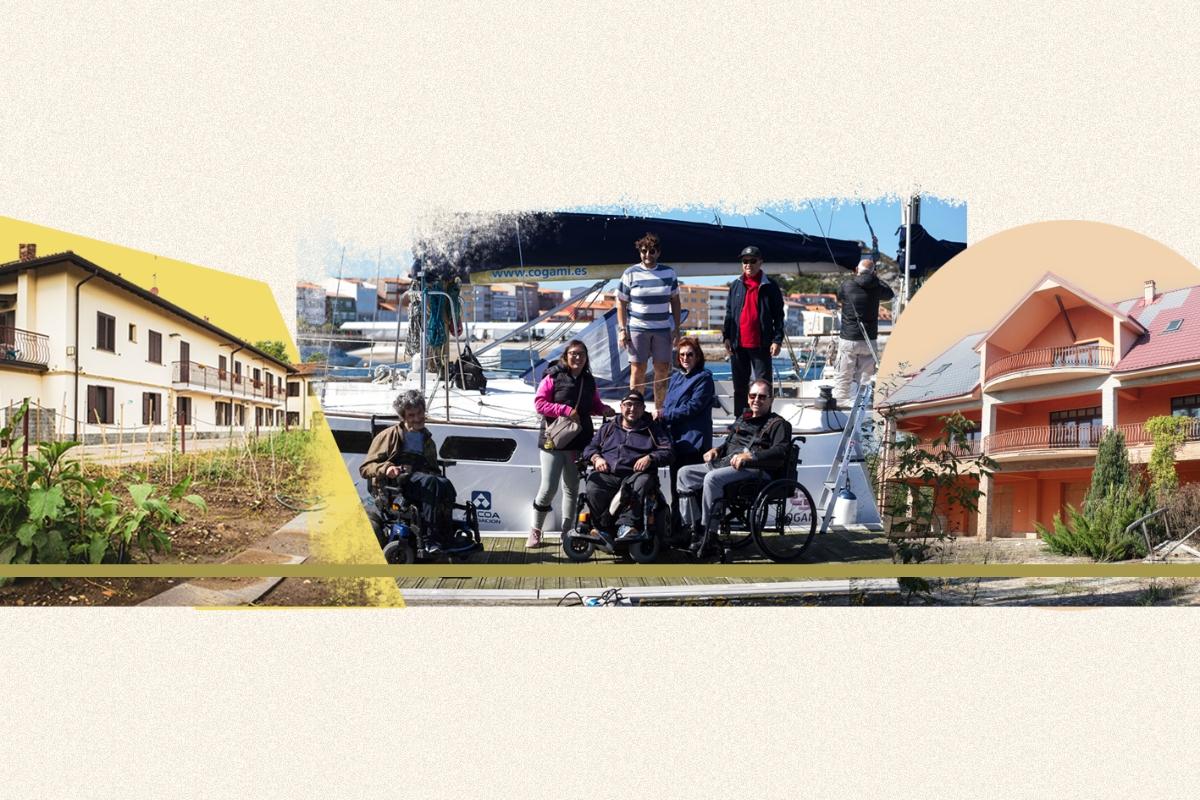

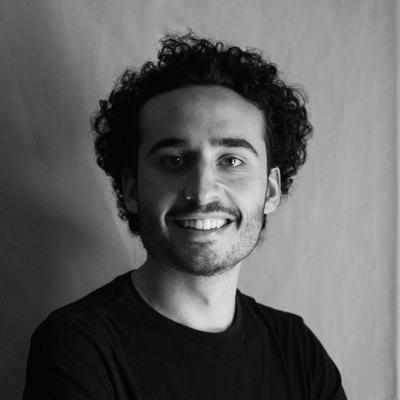
30 settembre 2024
A farmhouse surrounded by fields in the outskirts of Milan, Italy, where asylum seekers and minors in foster care live alongside seniors; a sailboat that allows people with disabilities to take tours along the Galician coast, in Spain; a villa with an orchard in Traian, Romania, set to become an elderly care home. Despite being separated by hundreds of miles, these places share a common past: they all belonged to criminals, before being seized by public authorities and given back to the local community.
Mafia, corruption, environment, migration: read lavialibera's English articles
The social reuse of confiscated assets has gained recognition in recent decades as an effective tool to combat crime not only by reappropriating the economic and social space previously occupied by traffickers or gangsters, but also by promoting restorative justice, where these assets contribute to repairing the damage done to the affected communities. However, there is still a long way to go. According to Europol, only 1% of the profits generated annually from illicit activities at the EU level is confiscated and a 2020 report by the European Commission highlights that only 19 out of 27 member States adopted specific legislation on the social reuse of assets.
From crime to community: the social reuse of confiscated assets is a cross-border investigation by lavialibera (Italy), Scena9 (Romania) and Maldita.es (Spain) that explores reuse practices in the three countries highlighting their impact, challenges, and possible solutions.
The history of the social reuse of confiscated assets began at the end of the last century in Italy, with a major commitment by Italian civil society. A collection of signatures of more than a million people in the country, in fact, supported law 109/96 presented by Giuseppe Di Lello, member of Parliament and former magistrate of the anti-mafia pool. “At the historic moment when this law was voted on, the chambers were dissolved and we were heading towards elections,” says Tatiana Giannone, head of the Confiscated Assets sector of Libera, the most important Italian anti-mafia association. “There was a need to pass the law very quickly and - Giannone continues - after a great advocacy action, it was approved in the Justice Commission in deliberation”. At the time, it was already a great change of direction in the fight against the mafia phenomenon: the idea that military repression of criminal organisations - also in view of the massacres that had bloodied Italy - would not be sufficient to curb their dangerousness, especially in the presence of huge reserves of capital. There are three different asset categories: from current accounts and shares to flats, land, business premises and companies.
Over the years there have been several implementations of the law, but it still has limitations, as Bruno Corda, director of the Italian National Agency for Confiscated Assets until August 2024, recalls: “Years pass from the moment the agency allocates the good to the moment the asset is reused. This time gap represents a sinkhole in the mechanism and risks giving the wrong impression, not only in Italy but also in other European States”.
In April 2024, the EU adopted a new directive to strenghten asset confiscation and recovery. Now "an ideological quantum leap is needed"
The Italian example was influential for European Union legislation. In 2024, the European Directive 2024/2016 was adopted to unify and strenghten they ways in which EU countries trace, freeze, confiscate and and use assets that belonged to organized crime. "The new directive contains measures of fundamental importance. But an ideological quality leap is needed in national consciences and regulations. Only when we stop considering crime as a foreign body, but begin to understand that it enjoys coexistence with society, then we will grasp the value of returning property to the community", explains Corda.
Tatiana Giannone also agrees, and she adds other objectives to the commitment of national governments: imagining the social reuse of confiscated property as a true restitution to the community and to the victims of crime, investigating the legal market that has been infiltrated by the mafias and helping companies that reuse well so that their businesses are sustainable, while proposing the establishment of a network of national agencies for the management of confiscated property, "so that there is a relationship between the public and private sectors, so that institutions and civil society can talk to each other". As these proposals seek to be realised in the coming months and years, the territorial diversities of confiscation and reuse tell different stories, of steps forward and stops, of successes and expectations.
The Italian supreme court gives broader benefits to the families of innocent mafia victims
Being a pioneer on the matter, Italy has developed a robust system of confiscation and reuse. The 2023 report by the National Agency counts 43.422 confiscated immovable assets on the national level as of the 31st of December 2023, mainly concentrated in the regions most affected by the presence of mafias (Sicily, Campania, Calabria, Apulia, but also the northern region of Lombardy). Out of them, 23.658 (55%) have been transferred for reuse, while the remaining 45% is kept under the custody of the agency waiting to be allocated. The social needs that the reuse of confiscated properties could help address are many, but local communities often lack the resources needed to apply for and manage the assets. “In many cases, confiscated properties are highly concentrated in small municipalities where both local authorities and civil society organisations, where present, might not be able to design a sustainable reuse project and make it work”, says Bruno Corda. “In such cases it is essential to encourage cooperation between neighbouring municipalities or civil society organisations to join forces”.
Casa Chiaravalle, located in the southern outskirts of Milan, offers a successful example of this. The largest confiscated asset in Lombardy, it consists of two farmhouses with a total area of 1,300 square metres surrounded by 7 hectares of land. This is where Pasquale Molluso, an arm and drug trafficker, used to live with his family before the property was seized by law enforcement in 2009, then transferred to the Municipality in 2013 and finally allocated for reuse in 2017 to a consortium of cooperatives. “If we didn’t have five solid organisations able to go to the bank and get funding, to save money from our activities, and to collect donations, this would have been impossible”, says Marco Lampugnani, president of the consortium.
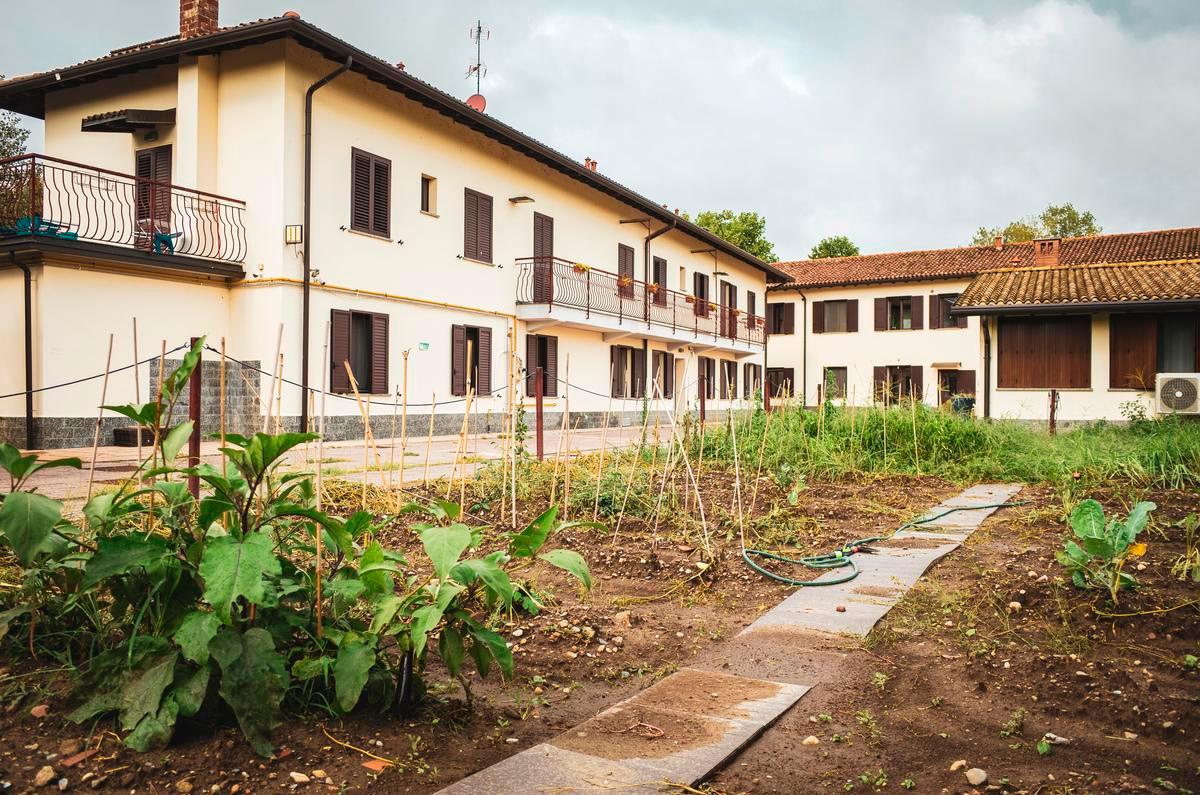
Today, Casa Chiaravalle hosts a diverse “housing mix”, as Lampugnani likes to say: a dozen elderly people living in a social cohousing, 14 homeless people, 9 minors in foster care, 4 asylum seekers. The decor is sober. Only the fine marble covering the floors and the size of the spaces hint at the opulence in which the former owners used to live. “They took everything away before we came in”, says Lampugnani. “This is one of the problems with the fact that too many years pass between seizure, confiscation and reuse”. The renovation work turned out to be longer, more expensive and more complex than expected: “There was no sewage system, they were illegally spilling wastewater into the fields. In total, we invested one million euros”.
The investment needed for renovation often discourage organisations from applying for reuse, also considering that the assets are entrusted under concession for a few years with no certainty of renewal. To overcome this barrier, last January the municipality of Milan introduced new rules according to which the duration of the concession can be adapted to the investment needed and, if by the time the concessions expire not all of it has been repaid, the remaining part can be covered by the new concessionaire.
Italy counts 3,225 confiscated businesses, but only 5% has been able to resume operating in the legal economy. Geotrans is one
The need for huge investment and management skills poses an even greater challenge when it comes to recovering confiscated businesses. Italy counts 3,225 of them as of september 2024, but only 5% is currently operating on the market according to the National Agency’s report. 68% is deemed “unable to continue or resume their declared economic activity” while the remaining 27% could do so only if properly accompanied in building a sustainable financial and operational plan. Geotrans, a transportation company based in Catania, Sicily, is one of the rare examples of confiscated companies that have managed to overcome the “legality shock”, meaning the shift from the criminal to the legal economy. Founded in the 1990s by the Ercolano-Santapaola mafia family, it was seized in 2014 and put under judicial management. In 2020, the company was taken over by its own workers united in a cooperative. Transitioning to the legal economy proved to be quite challenging, as president Maurizio Faro recalls: “At the beginning, we found ourselves with zero customers. The company used to work a lot with the agricultural sector, which is known for its high levels of criminal infiltration, so many farms linked to the mafia stopped working with us. Others did the same because they saw that many confiscated companies were shutting down within a few months”.
According to Faro, the key is to build a network of businesses that share the same values and support each other: “If I’m a cheese producer and I care about legality and antimafia, why not rely on a company like Geotrans to distribute my produce?”. By partnering with other cooperatives, Geotrans finally managed to gain a space in the market and today transports agricultural products from Sicily to the supermarkets of a major chain throughout Italy.
The impact of success stories like this one is not limited to the confiscated company alone, but spills over to the local economy, as Corda explains: “When a business doesn’t play by the rules, doesn’t pay taxes, doesn’t respect workers’ rights or benefits from illicit revenue, all other businesses in that area tend to do the same to remain in the market. Therefore, bringing that company back to the legal economy contributes to re-establishing a system of fair competition that benefits the whole area”.
'Ndrangheta: local roots, global opportunities
In Spain, traffickers have occasionally used sailboats to transport drugs to the coast or invested illicit money in mansions in rural areas. But what happens to those assets when they are caught? In 2003, Spain created the Fund for Confiscated Assets from Illicit Drug Trafficking managed by the National Plan on Drugs (PNSD), which is attached to the Spanish Health Ministry. Properties seized in anti-drug trafficking operations are placed under judicial custody until a final verdict is issued. If there is a guilt conviction, the asset can be confiscated, becoming state property.
The Fund is responsible for receiving the assets already confiscated for their management, which can be: sold, auctioned or transferred. However, the transfer is laid down by law as an “exceptional” event. The data provided to Maldita.es after a FOIA request on the destination and use of the assets not included or not auctioned by the Fund, between 2018 and 2024, detail that only 3.35% of the assets are transferred.
In practice, authorities and associations that promote social projects through confiscated goods believe that the procedures should be streamlined and make their social uses more flexible. This way, it would prevent assets confiscated from drug trafficking from accumulating in a warehouse and becoming obsolete without being able to return a social service to the community as indicated by the law, either economically or through the transfer of their use. “While it is not sold, that good may be providing a service to society”, said Fernando Alonso, manager of the Galician Foundation Against Drug Trafficking. According to data provided to Maldita.es, between 2028 and 2024, a total of 4,154 assets of the Fund were abandoned for different reasons, such as the delay of judicial proceedings for years until a final judgement was issued or the deterioration suffered by these assets in the meantime.
If we talk about transferred assets, an example is the Finca El Campell, located in Pedreguer, a town of 8,000 inhabitants in the interior of Alicante, in the east of the country. It is a mansion that, until 2006, belonged to the drug trafficker Francisco Javier Martínez Sanmillán, known as ‘Franky’, and which is now integrated into the Confiscated Assets Fund. On the first floor, a non-profit association that cares for people with mental health illnesses, AMADEM has its office. The building also hosts the community unit for the prevention of addictive behaviour in the region and several social organisations have used its facilities for activities related to the prevention of drug addiction in previous years. However, there is more space available for other activities in the 400-square-metre house, and the local council hopes to find more alternatives for social uses, to offset the investment made, more than 250.000 euros since 2008, for the recovery and improvement of the asset. Otherwise, they say, they will have to return it to the Ministry of Health, which “will probably auction it off”.
In Galicia, the sailboat Laion, confiscated from drug traffickers, has became a tool for the social inclusion of people with disabilities
In Galicia, the sailboat Laion travels along the Camariñas estuary, in A Coruña, without having been auctioned off by the state. It was seized from drug traffickers at the end of the 1990s. Now, after being transferred to COGAMI, a non-profit organisation, it is used as a tool for inclusion so that sailing is an activity open to all people. This was the case of Emily and Damián González, siblings aged eight and ten, respectively, both with a motor disability, who, thanks to the activity in Laion, were able to meet other young people who participated in the crossing, according to their mother, Jessica Carmona.

Between 2013 and 2023, up to 7,833 vehicles from drug trafficking have been seized in Spain, the most frequent asset, followed by “objects”, such as mobile phones, furniture or clothes (6,675), companies (2,025), boats (1,340), properties (1,025) and jewellery (869). The case of this sailboat is different from other assets and does not respond to the current requirements that must be met to proceed with the delivery of an asset to an entity or institution because it occurred before the Fund for Confiscated Assets came into force. The Spanish High Court ordered the transfer directly into care and custody to the NGO without indicating a specific duration. This allows COGAMI to improve its activity: “You don't invest the same in improving the boat and keeping it in perfect condition if you know that after five years you may no longer be able to use it,” comments its coordinator, Isabel González.
A new report sheds light on criminal infiltration in European seaports
"I read a European study which said that defendants prefer to spend time in prison rather than have their wealth taken away. Which proves to be right," said in 2018 Laura Codruța Kovesi, then Chief Prosecutor of the Romanian National Anticorruption Directorate, now head of the European Public Prosecutor's Office, at a meeting with lawmakers on the recovery of confiscated assets. “There is no worse thing than the seizure of assets, so the best thing is to leave”, said in 2008 the Italian-American mafia boss Francesco Inzerillo in a wiretap recorded by police as part of Operation Old Bridge, a joint US-Italy law enforcement operation that saw 77 people arrested between New York and Palermo.
Of the 129 properties confiscated in Romania since 2016, only two are now involved in a public or social reuse procedure. A lighter bureaucratic process and funds would help expand this practice
Since 2015, Romania has put in place the National Agency for the Management of Seized Assets (ANABI), which shares with The National Agency for Fiscal Administration (ANAF) the recovery of seized assets and is the main responsible for their social reuse. On ANABI’s website, in addition to auctions of luxury cars and watches, gold ingots or cubic meters of confiscated timber, there are also announcements regarding buildings which have become state property and could be reclaimed by public institutions or NGOs for crime prevention projects or victim support. Of the 129 properties seized by prosecutors and taken into state ownership over the course of eight years (2016-2023), only two are now involved in a public or social reuse procedure.
In 2020 the first case of public reuse of a seized building was announced with fanfare. A glass and steel office building in the centre of Bucharest, once belonging to a financial criminal, was to become the new headquarters of the National Directorate of Probation. The case involved fraud and embezzlement through an offshore network, at the advice of Romania’s own “Offshore Master”, Laszlo Kiss. Four years after the public announcement of its reuse, the building is temporarily occupied by another public institution, The National Administration of Penitentiaries, while waiting for the renovation of their old headquarters.
It takes several years until an asset can become state property. And then another several years until it can be used by the community. “In Romania, this transformation is bureaucracy in itself”, explains Radu Nicolae, a passionate expert in anti-corruption and asset recovery, president of the Association for Cooperation and Durable Development. “You need budget for painting the walls, re-compartmentalization, wiring, equipment, and transportation. All this has to be firstly budgeted and secondly put through public procurement, then comes the carrying out of the procurement, the reception and then the installation of people there and the functioning.”
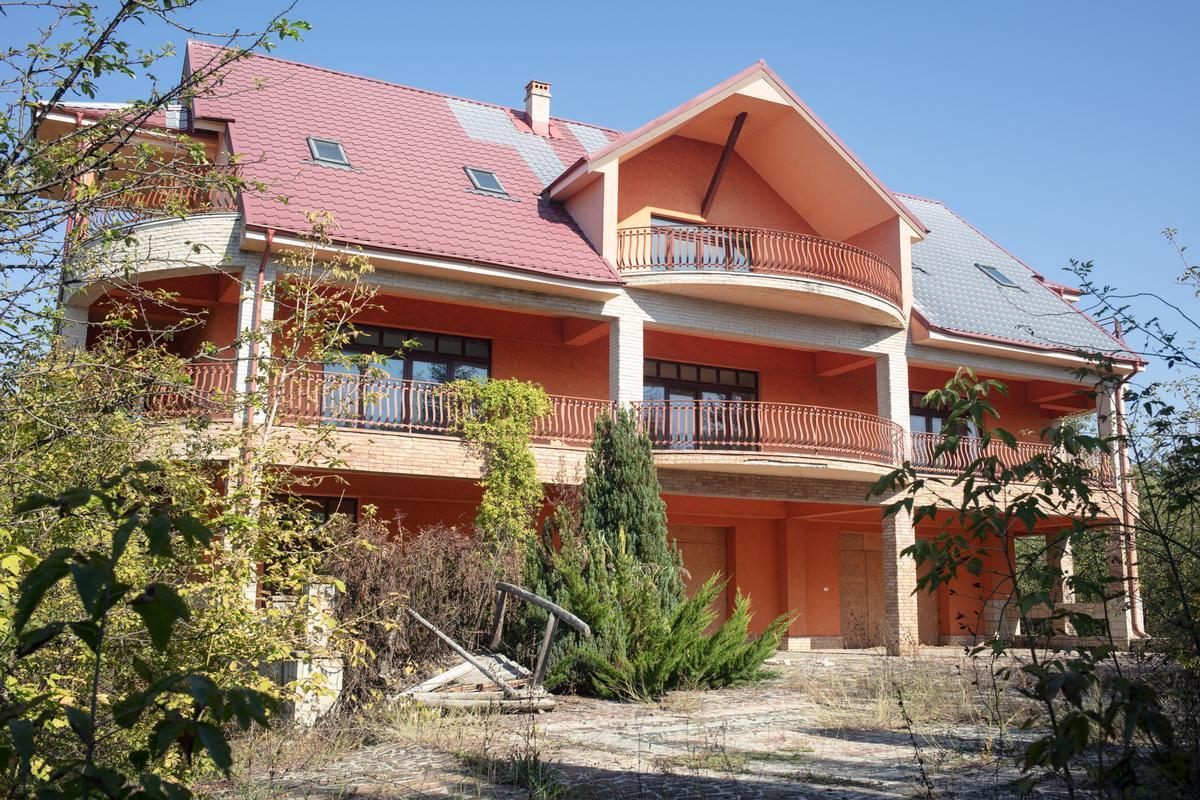
Someone in Northern Romania seems to be more hopeful. “Failure is not an option for us”, says Sorin Gherghelucă, the mayor of Traian, a small commune in Bacau county. He has the keys to the first confiscated building ever planned for social reuse in the country. It’s a two-storey lush orange villa, with the allure from Great Expectations, overlooking a huge abandoned orchard with apple, plum and cherry trees. It was seized seven years ago from a quite well known local figure in a tax fraud and embezzlement case. In April 2024, the mayor from Traian saw the announcement on ANABI’s website, sent a request for reuse and went to the Romanian Government to convince them his municipality is capable of managing what they plan to be a care home for the elderly. Then he got the keys.
But the hardest part is just beginning. The municipality is now looking for partner NGOs with the right expertise in caring for the elderly, and funds to transform the building. “This time next year I hope you will see people living there”, says the mayor. He knows there is a great need in his community, he says he keeps receiving many messages from people leaving abroad who are worried about the parents they left in Traian. Indeed, Traian has an aging population, in a country where social services and palliation are very weak and scarce. First Gherghelucă plans to launch a public call for tenders, write some funding applications and, since winter is coming near, to trim the trees and the plants, so that they are a welcoming sight. The beneficiaries could also care for the orchard and use its fruits. “We will make something beautiful there”, he sighs.
What would it take to see more local communities in Romania being given the chance to put to reuse for their benefit a confiscated building from organised crime? Quite a lot, says expert Radu Nicolae. First, there is a need for information - more municipalities and NGOs need to be informed about the opportunity of social reuse. Then, they need to be trained and provided an amount of money to at least carry out the renovations. “We can do what the Italians did. They made a strategy that is part of an operational program funded by the European Union, on the rehabilitation of confiscated buildings.” Indeed, the former Italian government had allocated 300 million euros for this, but the new government stopped the program.
A lighter bureaucratic process and funds specially designed for the re-purposing would be among the first steps in Romania. “I believe that if we persevere the next 5-6 years in this and do it more and more stubbornly and better, things can change. The important thing is to persevere, because if we give up, we are right back where we started. Which means 11 wasted years.”, concludes Nicolae.
Andrea Giambartolomei (lavialibera), Nacho Gallello, Álvaro García, Coral García Dorado (Maldita.es), Luiza Vasiliu, Victor Ilie and Andra Matzal (Scena9) also contributed to this investigation.
This article was developed with the support of Journalism Fund Europe.

La tua donazione ci servirà a mantenere il sito accessibile a tutti
Mine antiuomo, piani sanitari segreti e finanziamenti "sostenibili": tutti i trucchi con cui l'Europa ci porta alla guerra
La tua donazione ci servirà a mantenere il sito accessibile a tutti